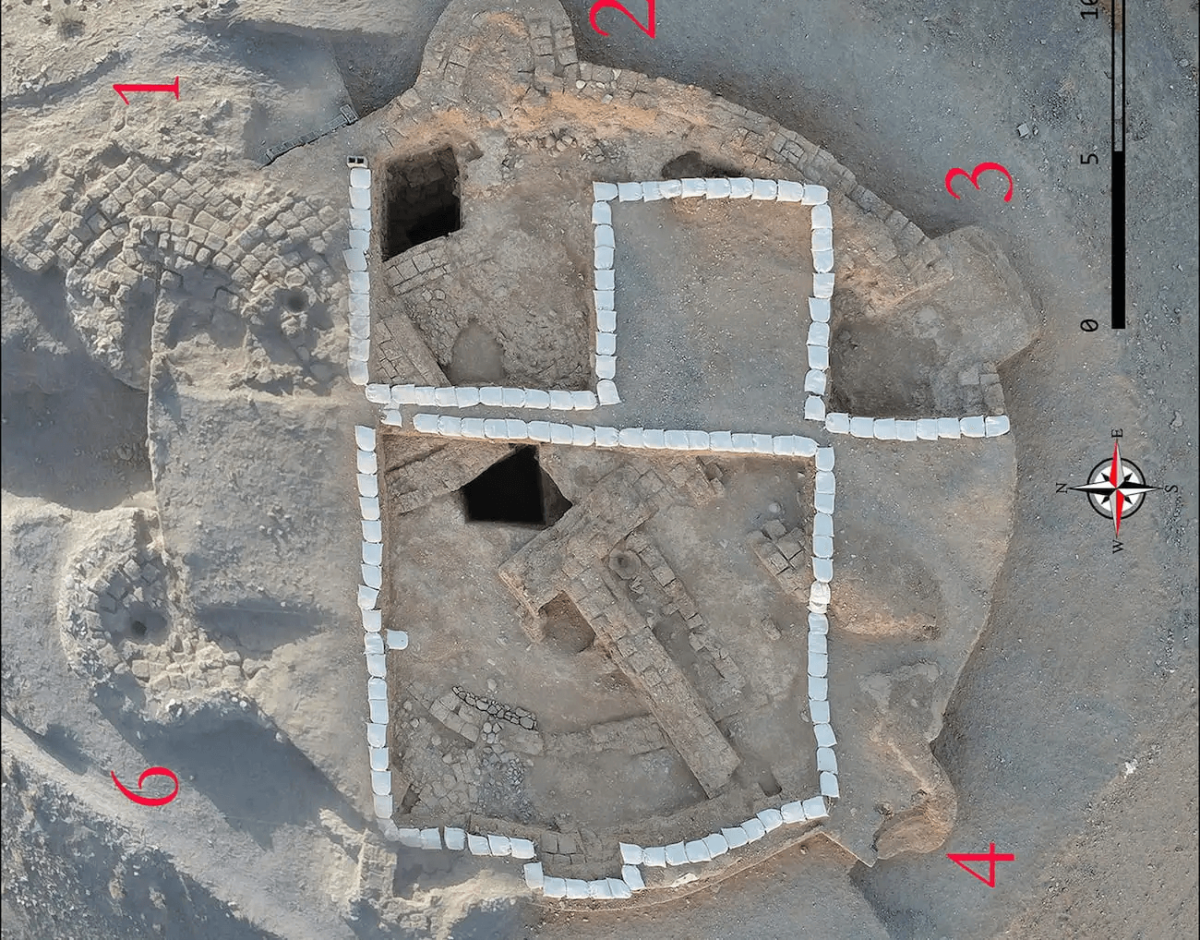Archaeologists in South Khorasan, Iran, have unearthed a remarkable structure unlike anything previously encountered in the region. The site, named Tappe Takhchar-Abad, dates back to the 6th century BC and boasts a unique, almost circular adobe building with six solid towers.
Excavations in Khorasan, a largely unexplored region in eastern Iran, began in 2009 and have continued to the present day. This dedication has yielded significant results, with Tappe Takhchar-Abad standing out as a particularly intriguing discovery. Notably, this is just the third archaeological site excavated in eastern Iran, following Dahane-i Gholaman in Sistan and Tappe Rivi further north.
Located near Birjand on the edge of a barren plain, Tappe Takhchar-Abad sits atop a semi-conical hill. Four excavation seasons have revealed a fascinating layout. Surrounding the base of the hill, a wide trench measuring roughly 11 meters served a defensive purpose. Water was supplied through a canal situated to the northeast. However, the most captivating element lies at the heart of the site.
Carefully unearthed after four seasons of meticulous work, the archaeologists uncovered the remnants of a nearly circular building. Constructed from adobe and a mudbrick technique known as pisé, the structure boasts an impressive 18-meter diameter. Six sturdy towers punctuate the facade, and the walls rise to a height of three meters.
Intriguingly, the building appears to have been deliberately filled with sand after its construction. Evidence suggests this filling occurred in two distinct stages, with alternating layers of broken and intact bricks, sand, and stones used to meticulously bury the structure to a height of nearly two meters.
The reasons behind this purposeful burial remain a mystery. However, archaeological findings indicate that further structures were built on top of the filled building during the Parthian period, suggesting a potential repurposing of the space.
Traditionally, circular structures in the region have been associated with the Parthian period. However, recent discoveries, including the unearthing of 10 similar circular sites east of Greater Khorasan in Bactria, point towards a potentially earlier origin for such constructions. Evidence from Tappe Takhchar-Abad aligns with this emerging theory.
Analysis of pottery fragments unearthed at the site reveals two distinct periods of occupation. The Late Iron Age/Achaemenid period (7th-6th centuries BC) and the Parthian period (3rd-4th centuries AD) are both represented. Interestingly, the circular building itself appears to belong to the earlier period.
Comparisons have been drawn between Tappe Takhchar-Abad and Garry Kyariz I, a circular structure with eight towers located in Turkmenistan. This structure dates back to the Iron Age and Achaemenid period, showcasing a similar architectural style.
The Achaemenid Empire, spanning roughly 200 years (550-330 BC), ruled over a vast region, encompassing areas from Central Asia to Egypt. Identifying Achaemenid sites based solely on surface features like pottery is challenging due to their significant similarities with preceding periods.
The ongoing excavations in South Khorasan hold immense potential to rewrite our understanding of the Achaemenid era. By shedding light on previously unknown building styles and techniques, Tappe Takhchar-Abad promises to be a cornerstone in our ongoing exploration of this pivotal period in Iranian history.
